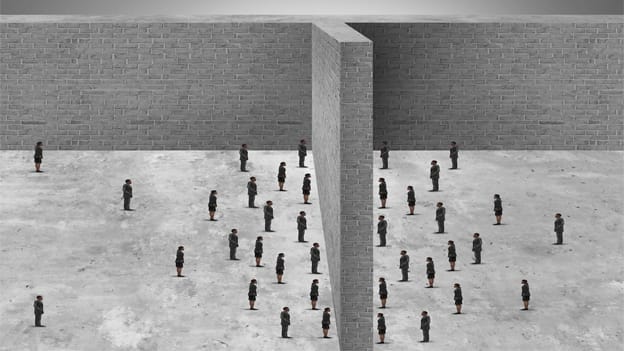Defining the next frontier for Human Resources

As we come to the end of 2017, a year that was eventful both geopolitically and economically, it would not be wrong to state that it has left us with a world that is grappling with some great opportunities, threats such as protectionism, and some harsh economic realities. So a question many CEOs and CHROs should be asking is “What should the immediate and broader longer term 2018 HR focus be? — especially in this VUCA world that is undergoing disruption across disciplines at a pace higher than ever before.
Thus, the right “bifocal strategy” i.e. a balance of looking into the future and executing in the here and now, is key. In my view, the themes below capture that essence.
Convergence of Digital & Analytics for People and People Systems
The convergence of digital and analytics for people systems is already here and the C suite needs to recognize that quickly, work to adopt it and accelerate its execution. A good frame to approach this is to pick customer use cases and apply them to people and people systems. i.e. think of your employees and people ecosystem as “customers”. For e.g. deploying machine learning models that predict, and answer productivity and attrition linked questions such as productivity drop risk in front line Sales or attrition in high risk categories, based on people variables such as demographics, qualification, experience, compensation, performance data etc. or designing better sales incentive plans using machine learning models that help do away with any typical standard design variable bias. These are here and now as both ideas are currently being deployed in the industry. On the digital front, organizations need to increasingly use digital means to engage, service and create experience stickiness with employees just like we are doing with customers, for example, apps with 2-click fully digital service fulfillment (attendance geo tagging, auto approval of attendance based on performance, auto enrolment are examples in use) and AI based HR platforms etc.
Embedding Artificial Intelligence & Robotics in business & HR strategy
It’s important to realize that robotics and AI is here to stay and they are already impacting job disintermediation and business systems in industries such as IT, BPO, Banking, retail etc. The C-Suite, in particular CHROs, needs to think through implications of job losses, proactively reskilling current employees and leveraging robotics and AI in HR, for example, deploying HR Chatbots, robo-calling/gamification for employee services or new system adoption/enrolments, L&D “suggestion engines”, social media engagement ecosystems and “phone graphing” to drive employee reskilling, learning & retention.
Another focus should be to build and encourage localized intra-organization micro social networks (sales, operations etc.) ideally on robotics/AI based HRMS platforms that allow organizational engagement with employee, employee learning, sharing and problem-solving. This will also simultaneously allow the organization to build competitive advantage by allowing “crowd sourcing and solving” of day-to-day customer and HR issues at a local level.
Applying Design Thinking to organizational HR problems
This is an idea whose time has come but crafting the design thinking innovation and problem-solving approach, disseminating it and institutionalizing it as a way of life in an organization remains a huge challenge. This is easier said than done and big organizations will struggle far more than smaller organizations. But irrespective, the best approach is to embrace it as a C-Suite team, agree on and roll out a set of pilot initiatives that address key organizational challenges. But having primary stakeholders for those pilots that are evangelists and promoters of the design thinking approach will be the difference in adoption and the initiative stalling. Also having a dedicated lean team in HR that works with CHRO and CEO directly and drives this is a pre-requisite.
Build agile & nimble “3rd party” ecosystems in HR
Organizations need to realize that they will never be good at “building and solving” for everything in HR systems and technology, especially given the pace of disruption and change. So in order to garner HR and HR Tech based competitive advantage, organizations need to leverage the external HR tech, digital and “start-ups” networks to build a 3rd party partnership-based ecosystem that works on solving the key organizational priorities and challenges. No doubt, this is a tough ecosystem to build and maintain. But when executed well, this allows HR to have the strategic play to be nimble and plug and play with the latest systems, platforms or tools which are a “better mousetrap” to solve vexing or new HR problems as they arise.
As we look to 2018, I believe all leading-edge CEOs and CHRO’s will look to begin these “journeys”, as make no mistake, these are journeys for organizations and not a destination.







![E-book: HR Analytics and You [Download Now] E-book: HR Analytics and You [Download Now]](https://res.cloudinary.com/people-matters/image/upload/w_220,h_124,c_thumb,q_auto,f_auto/v1707908296/1707908294.jpg)



